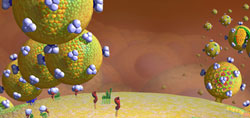Nov 19 2024 @ 7:00 PM - 1) HPV-positive Oropharyngeal Cancer and 2) Targeting Inflammation in Treated HIV, version 3.0
HPV-positive Oropharyngeal Cancer: Pathogenesis, Epidemiology, Prevention, Diagnosis and Treatment
Anil K. Chaturvedi, Ph.D.
Senior Investigator, Clinical Epidemiology Unit, Clinical Genetics Branch
Senior Advisor for Faculty Development
Division of Cancer Epidemiology and Genetics
National Cancer Institute, National Institutes of Health
Rockville, MD
Scott A. Roof, MD MS
Assistant Professor
Director of Clinical Research
Division of Head and Neck Oncology and Microvascular Surgery
Department of Otolaryngology - Head and Neck Surgery
Icahn School of Medicine at Mount Sinai
You are probably aware that HPV is the most common STI, that HPV-16 is the most common cause of anogenital cancer, and that HPV vaccines are most effective when administered before sexual debut. But we now know that the most common cause of oropharyngeal cancer is also HPV-16, and the risk is 2 to 3 times greater in people with HIV. It is critical that we providers at the primary care level keep up to date on the prevention, early diagnosis, and appropriate specialist referral for the spectrum of HPV-related disease. This presentation by Anil Chaturvedi from the NIH, and Scott Roof from Mount Sinai addresses the epidemiology and impact of oropharyngeal cancer, as well as the clinical signs/symptoms, diagnosis and treatment.
Targeting Inflammation in Treated HIV, version 3.0
Peter W. Hunt, MD
Professor of Medicine, Division of Experimental Medicine, UCSF
Co-Director of Basic/Translational Sciences, Center for AIDS Research
San Francisco, CA
A complex interaction of genetic factors, coinfections, immune activation and chronic inflammation persist throughout the course of HIV disease and contribute to the multimorbidities that complicate the management of our patients as they age. Asymptomatic CMV coinfection seems to be a particularly troublesome cofactor for many PLWH. Peter Hunt from UCSF returns with an update on the most recent research pertinent to understanding these complexities as they relate to aging.

